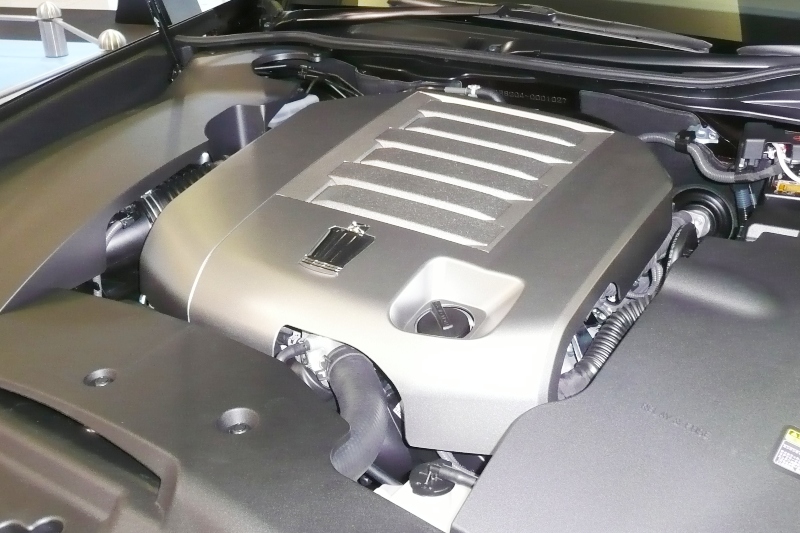VVT-i, or Variable Valve Timing with intelligence:-
is an automobile variable valve timingtechnology developed by Toyota, similar in performance to the BMW's VANOS. The Toyota VVT-i system replaces the Toyota VVT offered starting in 1991 on the 5-valve per cylinder 4A-GE engine. The VVT system is a 2-stage hydraulically controlled cam phasing system.
VVT-i, introduced in 1996, varies the timing of the intake valves by adjusting the relationship between the camshaft drive (belt, scissor-gear or chain) and intake camshaft. Engine oil pressure is applied to an actuator to adjust the camshaft position. Adjustments in the overlap time between the exhaust valve closing and intake valve opening result in improved engine efficiency. Variants of the system, including Dual VVT-i.
VVT-i, introduced in 1996, varies the timing of the intake valves by adjusting the relationship between the camshaft drive (belt, scissor-gear or chain) and intake camshaft. Engine oil pressure is applied to an actuator to adjust the camshaft position. Adjustments in the overlap time between the exhaust valve closing and intake valve opening result in improved engine efficiency. Variants of the system, including Dual VVT-i.
Toyota VVT-i
Toyota came somewhat late to this party; its Variable Valve Timing with Intelligence (VVT-i) system was introduced for the V-8, V-6, and I-6 engines in '98-model-year Lexus LS400s, SCs, and GSs. But the company is making up for lost time, as VVT-i is now on virtually every Toyota and Lexus car in the line.
Toyota came somewhat late to this party; its Variable Valve Timing with Intelligence (VVT-i) system was introduced for the V-8, V-6, and I-6 engines in '98-model-year Lexus LS400s, SCs, and GSs. But the company is making up for lost time, as VVT-i is now on virtually every Toyota and Lexus car in the line.
VVT-i works much like Honda's VTC system. An engine control unit monitors various inputs (including engine speed, airflow, coolant temperature, and so on). Using oil pressure to actuate a camshaft timing pulley, it then advances or retards the intake camshaft to suit the engine's operating needs.
Since the introduction back in 1997, Toyota has developed a two-step, rpm-related variation of VVT-i called VVTL-i, which stands for Variable Valve Timing and Lift with Intelligence. Found aboard the 1.8L, 180hp engine in Toyota's Celica GT-S, the VVTL-i combines the continuously variable cam phasing with new, dual-lobe camshafts for both the intake and exhaust valves. At engine speeds below 6,000 rpm, a set of rocker arms follows a set of low-lift, short-duration lobes. At six grand, a pin under the rocker arms pushes them so they engage the second lobe set, which has been ground to make significantly higher lift. As with the VTEC system, the taller lift is better matched to the air-gulping needs of an engine spinning between 6,000 rpm and its 7,800-rpm redline.

Variable valve timing allows the relationship between the separate inlet and exhaust camshafts to vary the valve timing overlap. In doing so it overcomes the side effects described above by using a computer to continuously vary the intake valve timing and overlap. The valve timing and overlap are adjusted through a series of simple mechanisms to ensure the optimum conditions apply across all the working rev range. The advantages are lower fuel consumption, lower exhaust emissions and higher power output. Because the system is continuously variable, an ‘i’ for ‘intelligent’ has been added to the acronym.

Dual VVT-i :-
in 1998, Dual VVT-i which adjusts timing on both intake and exhaust camshafts was first introduced on the RS200 Altezza's 3S-GE engine.
Dual VVT-i is also found in Toyota's new generation V6 engine, the 3.5-liter 2GR-FE first appearing on the 2005 Avalon. This engine can now be found on numerous Toyota and Lexus models. By adjusting the valve timing, engine start and stop occurs almost unnoticeably at minimum compression. In addition fast heating of the catalytic converter to its light-off temperature is possible thereby reducing hydrocarbon emissions considerably.
Toyota's UR engine V8 also uses this technology. Dual VVT-i was later introduced to Toyota's latest small 4-cylinder ZR engines found in compact vehicles such as the new Toyota Corolla and Scion xD and in larger 4-cylinder AR engines found in the Camry and RAV4.
Dual VVT-i is also found in Toyota's new generation V6 engine, the 3.5-liter 2GR-FE first appearing on the 2005 Avalon. This engine can now be found on numerous Toyota and Lexus models. By adjusting the valve timing, engine start and stop occurs almost unnoticeably at minimum compression. In addition fast heating of the catalytic converter to its light-off temperature is possible thereby reducing hydrocarbon emissions considerably.
Toyota's UR engine V8 also uses this technology. Dual VVT-i was later introduced to Toyota's latest small 4-cylinder ZR engines found in compact vehicles such as the new Toyota Corolla and Scion xD and in larger 4-cylinder AR engines found in the Camry and RAV4.
In 1998, “Dual” VVT-i (adjusts both intake and exhaust camshafts) was first introduced in the RS200 Altezza’s 3S-GE engine. Dual VVT-i is also found in Toyota’s new generation V6 engine, the 3.5L 2GR-FE V6. This engine can be found in the Avalon, RAV4, and Camry in the US, the Aurion in Australia, and various models in Japan, including the Estima. Dual VVT-i is also used in the Toyota Corolla (1.6 dual VVT-i 124bhp).
Other Dual VVT-i engines include the 1.8L 2ZR-FE I4, used in Toyota’s next generation of compact vehicles such as the Scion XD. It is also used in the 2JZ-GE and 2JZ-GTE engines used in the Lexus IS300 and in the Toyota Supra. By adjusting the valve timing engine start and stop occurs virtually unnoticeably at minimum compression. In addition fast heating of the catalytic converter to its light-off temperature is possible thereby reducing hydrocarbon emissions considerably.





No comments:
Post a Comment